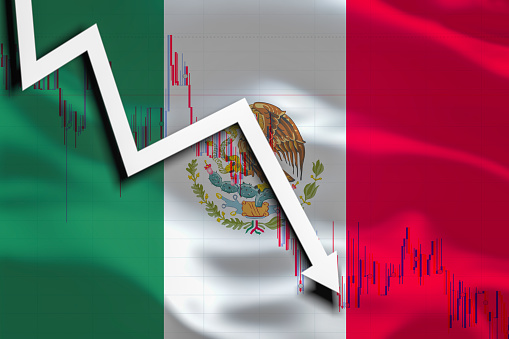Pulmonary vascular disease is a potentially fatal disease of the lungs. This article explores what causes it, whether it’s treatable, and what the best treatment options are. You’ll also learn what symptoms you can expect. You may be surprised at how many people suffer from pulmonary vascular disease each year.
What causes pulmonary vascular disease?
Pulmonary vascular disease is a complex disorder caused by problems with blood vessels in the lungs. Blood flows into the lungs from the heart, passing through the pulmonary arteries. As it moves through the lungs, oxygen-poor blood returns to the right side of the heart. The left side of the heart pumps oxygen-rich blood into the body through the aorta. Any part of this circuit can develop a problem, which results in pulmonary vascular disease.
Pulmonary vascular disease contributes to a large burden of chronic respiratory disease, which is why it deserves more attention from the medical community. As a result, a better understanding of the pulmonary vessels is essential to diagnosis. Unfortunately, some pulmonary vascular diseases are difficult to diagnose. For example, pulmonary embolism is a serious complication that can lead to death. This is why it’s so important to implement prophylactic treatment for those at risk.
Pulmonary vascular disease can result from a number of different causes. Many people with the disease have heart conditions that cause the arteries to be enlarged. Some of these conditions are inherited.
Can pulmonary vascular disease be cured?
The answer to the question “Can pulmonary vascular disease be cured?” is still elusive. While there are numerous treatments, there is no single treatment that can cure the disease. Treatment options will depend on how advanced the condition is, and other factors. The National Heart, Lung, and Blood Institute (NHLBI) is working to develop more effective treatments for PVD.
The first step toward treatment is to diagnose the disease early. This is crucial to the survival of the patient. It takes 18-24 months for the disease to be diagnosed, and by that time, many patients have already progressed. With an early diagnosis, however, patients can receive the essential medicines they need to manage the condition.
The symptoms of pulmonary vascular disease vary greatly from person to person, but there are some common symptoms that can be expected. A patient may experience shortness of breath, rapid heart rate, and throbbing chest pain. This condition can result in congestive heart failure.
What causes pulmonary vascular congestion?
Pulmonary vascular congestion can be caused by a number of different things, including heart failure, infections, and high blood pressure. It is a condition that causes excessive blood to build up in the lungs and causes the alveoli to swell and become distended. This enlargement results in decreased oxygenation, which makes breathing difficult. There are two types of congestion: active and passive. Active congestion is the result of infection or irritation of the alveolar walls, while passive congestion occurs due to relaxation of blood capillaries.
Pulmonary vascular congestion is also referred to as pulmonary edema. This condition affects the lungs and can lead to shortness of breath and even death. It is caused by a number of conditions, including congestive heart failure. The fluid builds up due to damage in the lungs that result in increased pressures within the pulmonary circulation. Increased pressure in the left ventricle may also be responsible for this condition. In severe cases, the condition may require treatment in an intensive care unit.
Chronic thromboembolic disease (thrombosis) can result in shortness of breath, which can make it difficult to engage in everyday activities. It may also cause symptoms like rapid heart rate and unexplained chest pain. If untreated, pulmonary vascular congestion can lead to chronic thromboembolic disease, which affects a large portion of the pulmonary arterial system.
Is pulmonary vascular disease fatal?
Pulmonary vascular disease is a condition where blood clots form in multiple small blood vessels in the lungs. These blood clots cannot be reabsorbed by the body, and they can cause severe shortness of breath. The symptoms of this disease can vary in intensity, and may be worse with deep breaths. Some people may also experience chest pain or fainting upon exertion.
Treatment for pulmonary vascular disease is aimed at decreasing the symptoms and reducing the strain on the heart. It may include the use of medications and surgery. If the condition is detected in its early stages, it can often be treated. Prevention is key to preventing heart failure and improving overall health.
Pulmonary vascular disease is a broad term that covers a variety of lung conditions. In most cases, pulmonary vascular disease causes shortness of breath and increased blood pressure in the pulmonary arteries. However, some pulmonary vascular diseases are a secondary effect of a nonvascular pulmonary disease.
How is pulmonary vascular disease diagnosed?
Pulmonary vascular disease is a serious and life-threatening condition that affects the heart and lungs. The condition occurs when a blood clot forms in the leg and travels to the lung, blocking the blood flow to the rest of the body. Other symptoms of the disease include chest pain, shortness of breath, and fatigue. Your doctor can perform several tests to help determine if you have the disease.
Although pulmonary vascular disease is relatively uncommon, it is still a serious condition that can lead to significant morbidity and mortality. Fortunately, pulmonary vascular disease can be diagnosed without lung biopsies and other invasive procedures. Using high-resolution CT angiography and magnetic resonance angiography to image the pulmonary vasculature is an excellent method for evaluating the extent and location of disease and to evaluate response to treatment.
Pulmonary vascular disease can be caused by several different causes. Some of these causes include pulmonary embolism and pulmonary hypertension. Pulmonary embolism causes blood clots to lodge in the lungs, causing severe shortness of breath. While the symptoms of pulmonary embolism and pulmonary venous hypertension may vary, they are both life-threatening and must be treated promptly.
Is pulmonary vascular congestion heart failure?
Pulmonary vascular congestion is a complication of congestive heart failure. It results from inadequate blood circulation due to an imbalance in the function of the pump. This causes an increased amount of fluid in the lungs, known as pulmonary edema. It is the most severe form of congestive heart failure.
The main symptoms of pulmonary vascular hypertension are shortness of breath and chest pain, which worsens when you take deep breaths. It can also be accompanied by an abnormally rapid heart rate and an elevated blood pressure. However, symptoms may vary depending on the size of the blood clot and its location.
There are two types of treatment for this condition. A patient may be treated with an intra-aortic balloon pump, which will help the heart pump better, or with a medication called a vasodilator. Lifestyle changes that help prevent heart failure may include eating less salt and avoiding processed foods. The patient may also be advised to exercise several days a week. They may also benefit from wearing compression stockings and elevating the bed head to reduce fluid in the lungs.
Can pulmonary edema cause sudden death?
Pulmonary vascular disease can be fatal, but there are other causes. One of the most common is coronary artery disease, which accounts for 80% of sudden cardiac deaths. Other factors include smoking, high cholesterol, and an enlarged heart. In addition, a previous episode of sudden cardiac arrest, history of congenital heart disease, and other blood vessel abnormalities are also associated with a high risk of sudden cardiac death.
Another complication of pulmonary vascular disease is pulmonary embolism, a condition in which a blood clot lodges in a pulmonary artery. These blood clots are caused by a variety of factors, including sluggish blood flow through the veins. They may also result from injury to the blood vessel wall. This can result in a heart attack, stroke, or heart failure.
In severe cases, patients may receive an intravenous (IV) injection of Heparin to dissolve the clot. In less severe cases, an oral anticoagulant, called Warfarin, may be administered. Another treatment option is fibrinolytic therapy, which is given intravenously.
What does a heart failure cough sound like?
Coughing is associated with many health conditions, including the common cold and even heart failure. While there are many ways to cause a cough, heart failure coughs are more serious and can be life-threatening. The sound and texture of a cough is important, as it can be an indicator of many conditions.
A cough may be a sign of heart failure if it is accompanied by other symptoms such as weakness, an irregular heartbeat, and an inability to urinate. Other symptoms of heart failure include difficulty breathing at rest or during activity. People with this condition may also experience difficulty sleeping, and may have to prop up their upper body with two pillows. They may also complain of waking up feeling drowsy or anxious. Fluid can also leak into the lungs from pulmonary veins, causing coughing and swelling. During a heart failure episode, a patient may also lose weight.
As heart failure progresses, the cough becomes more frequent and intense. Coughing may occur at rest and even while eating. Coughing may become so severe that eating becomes impossible. Heart failure can also cause restlessness and pacing. These behaviors are often triggered by the discomfort caused by the secondary symptoms of heart failure.



